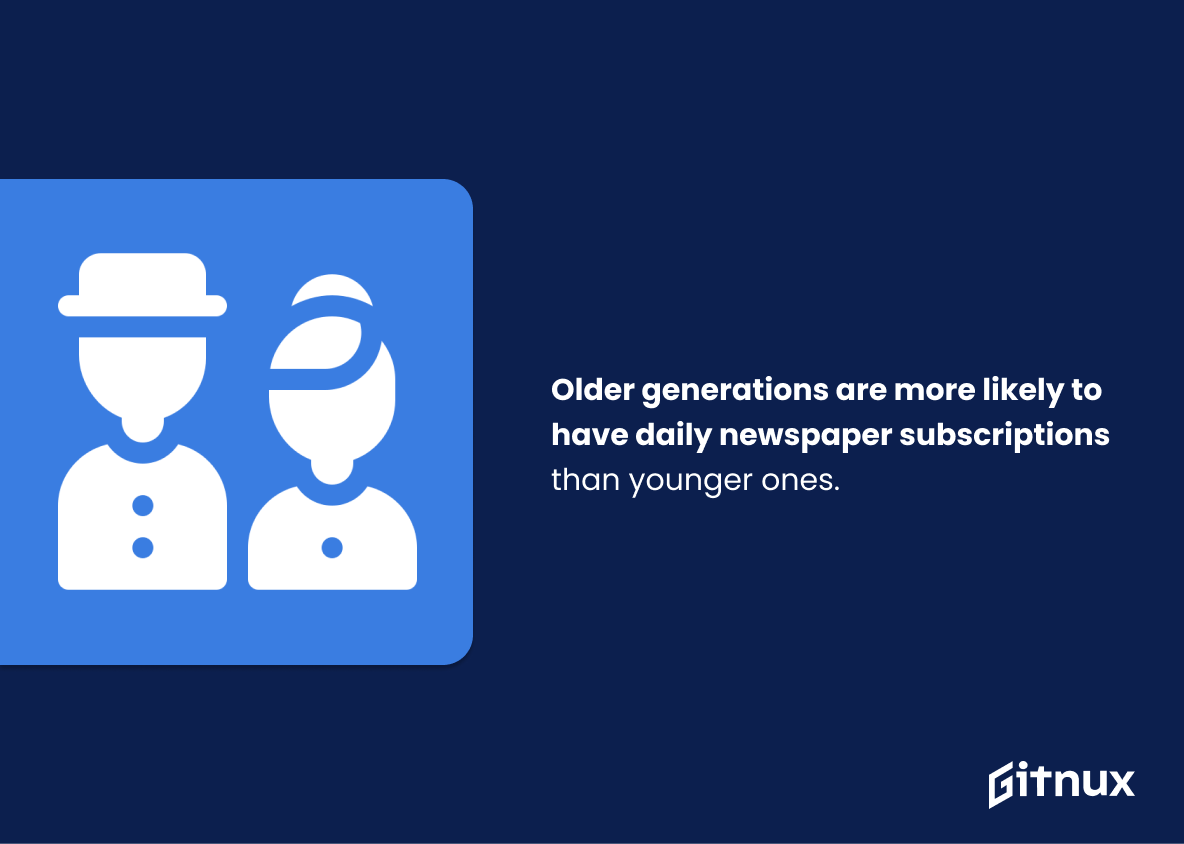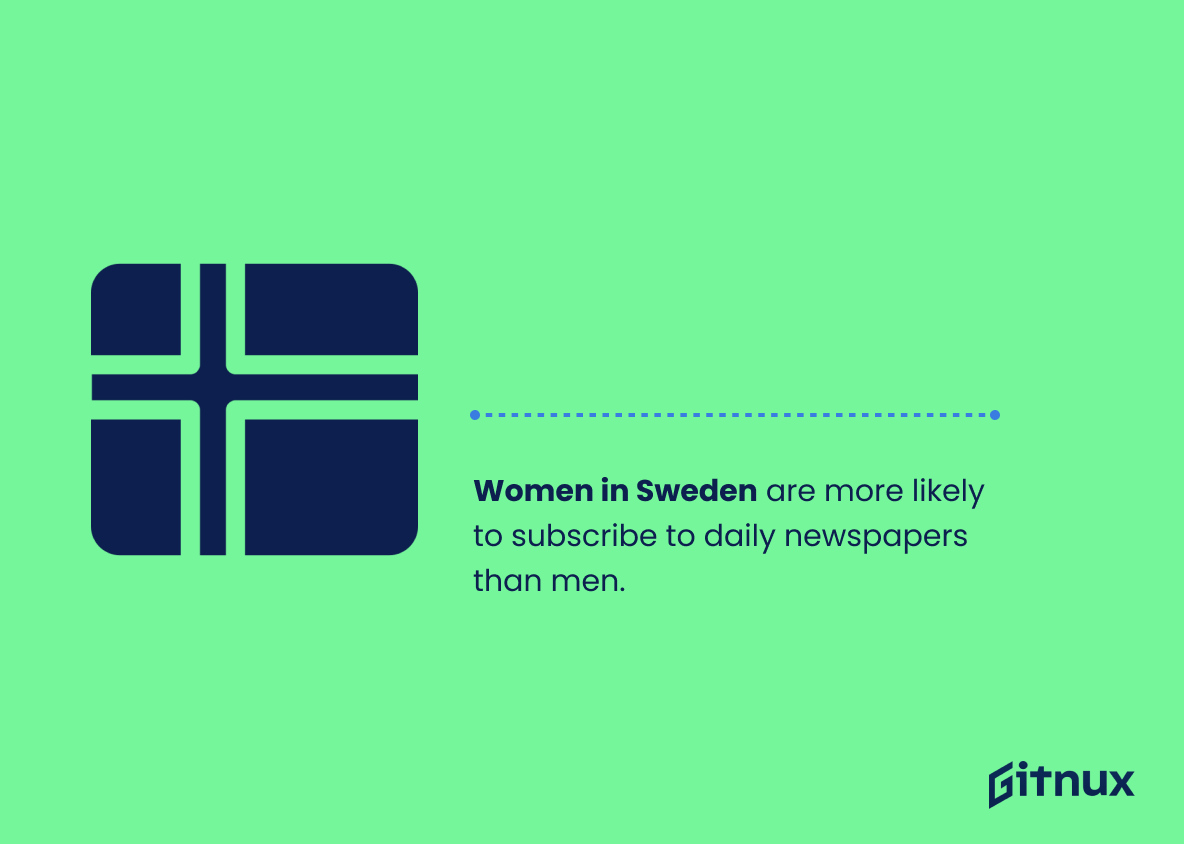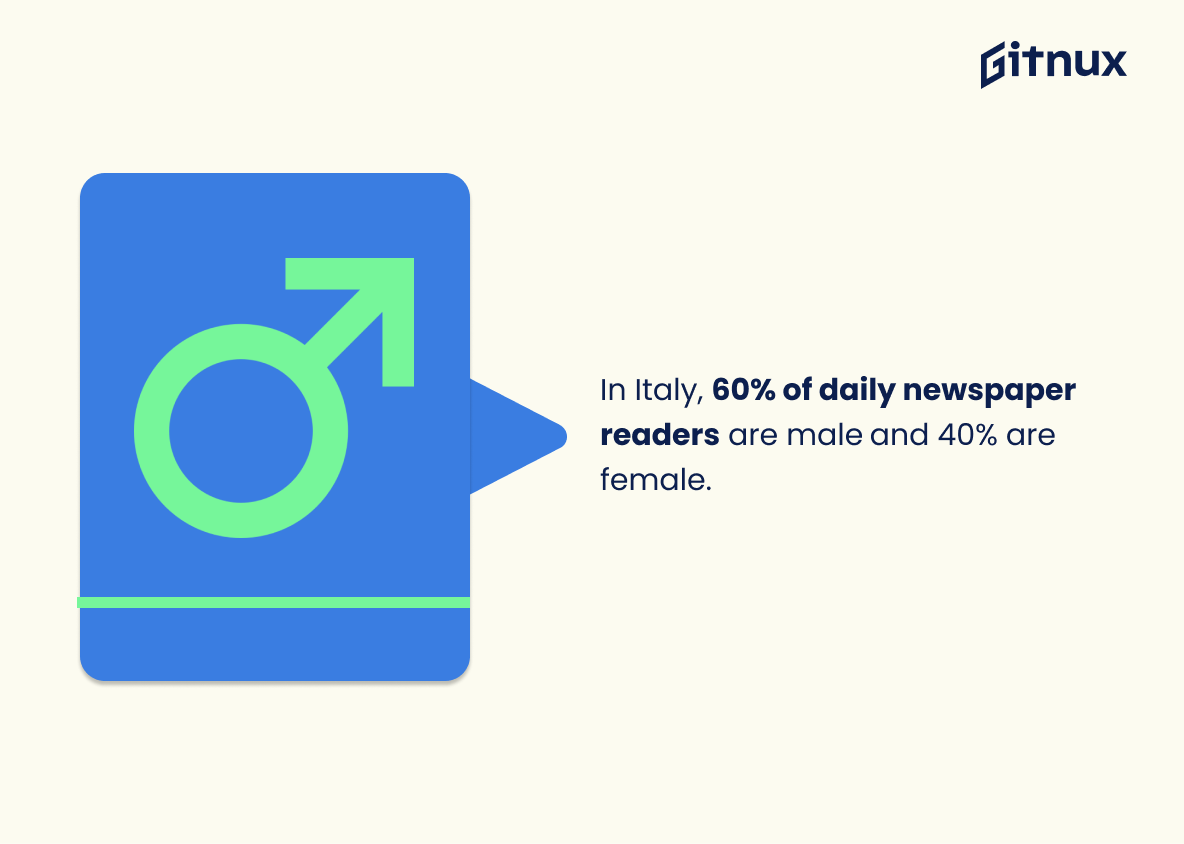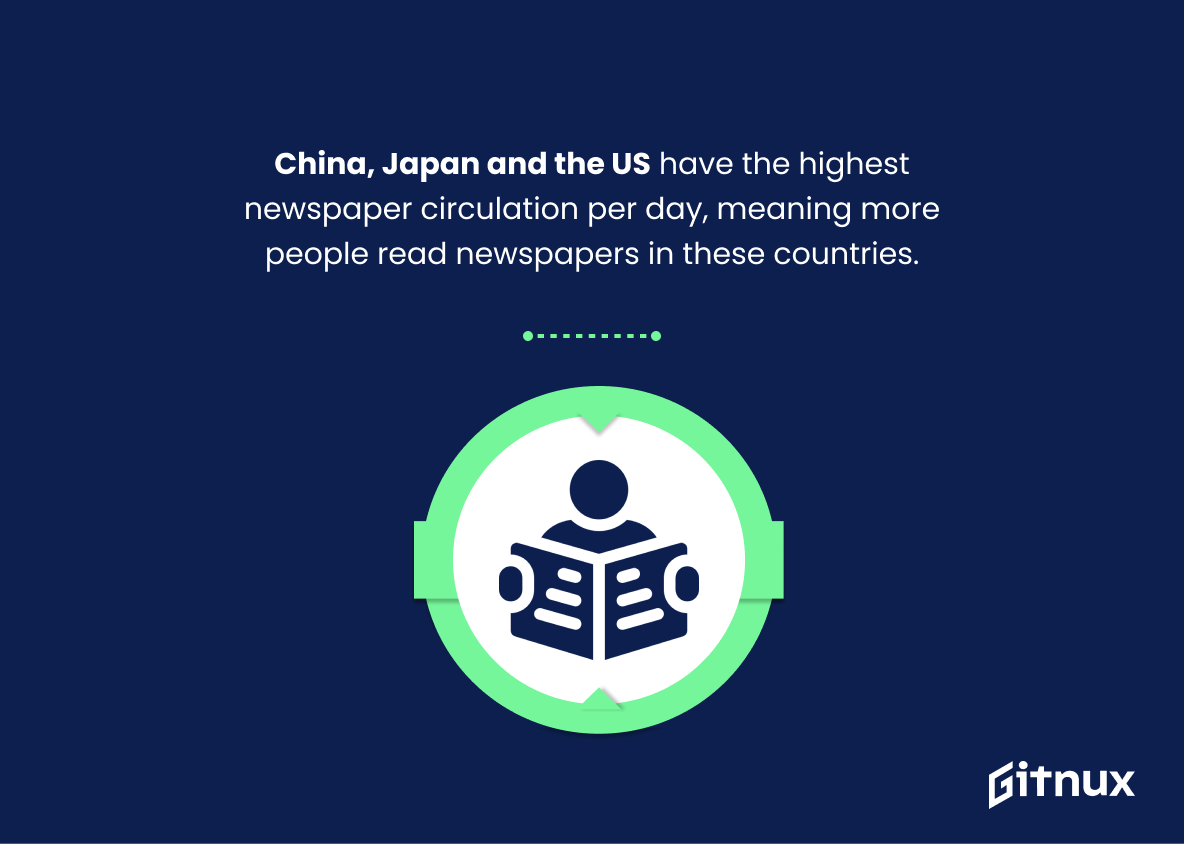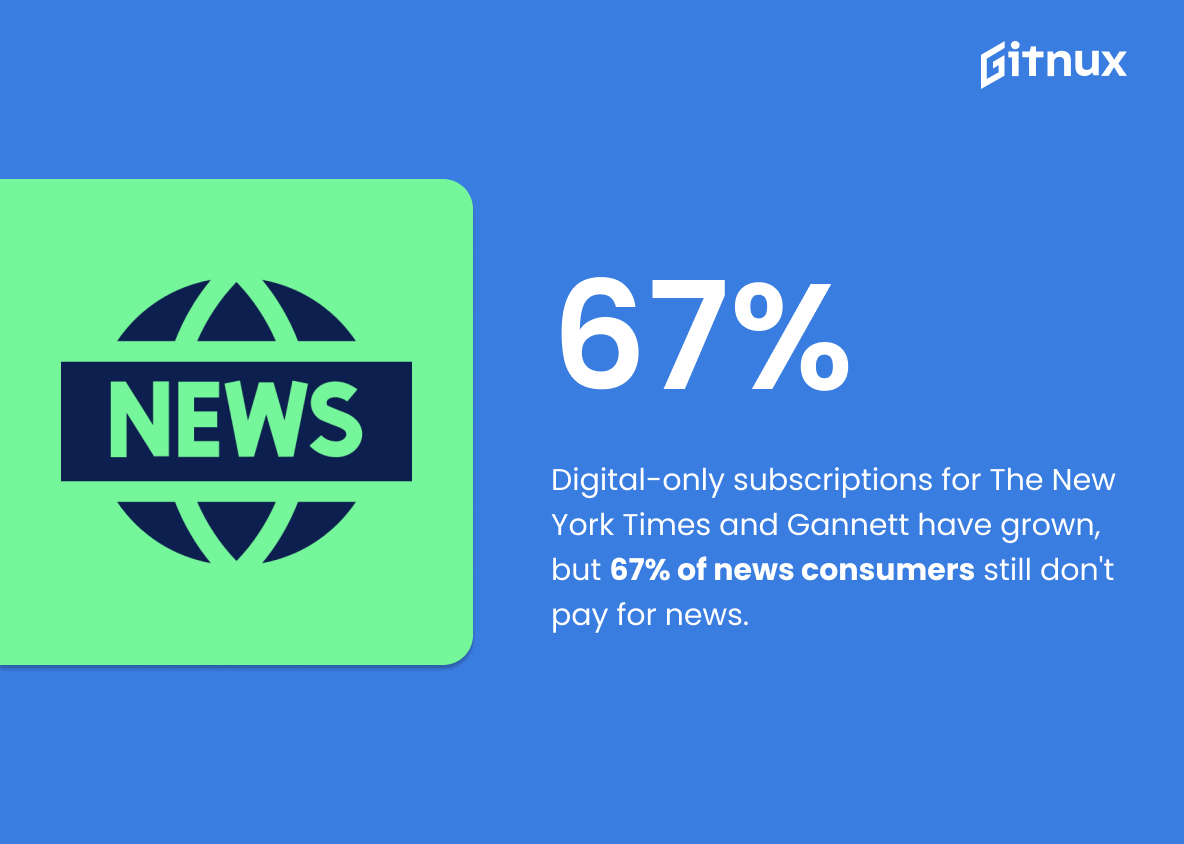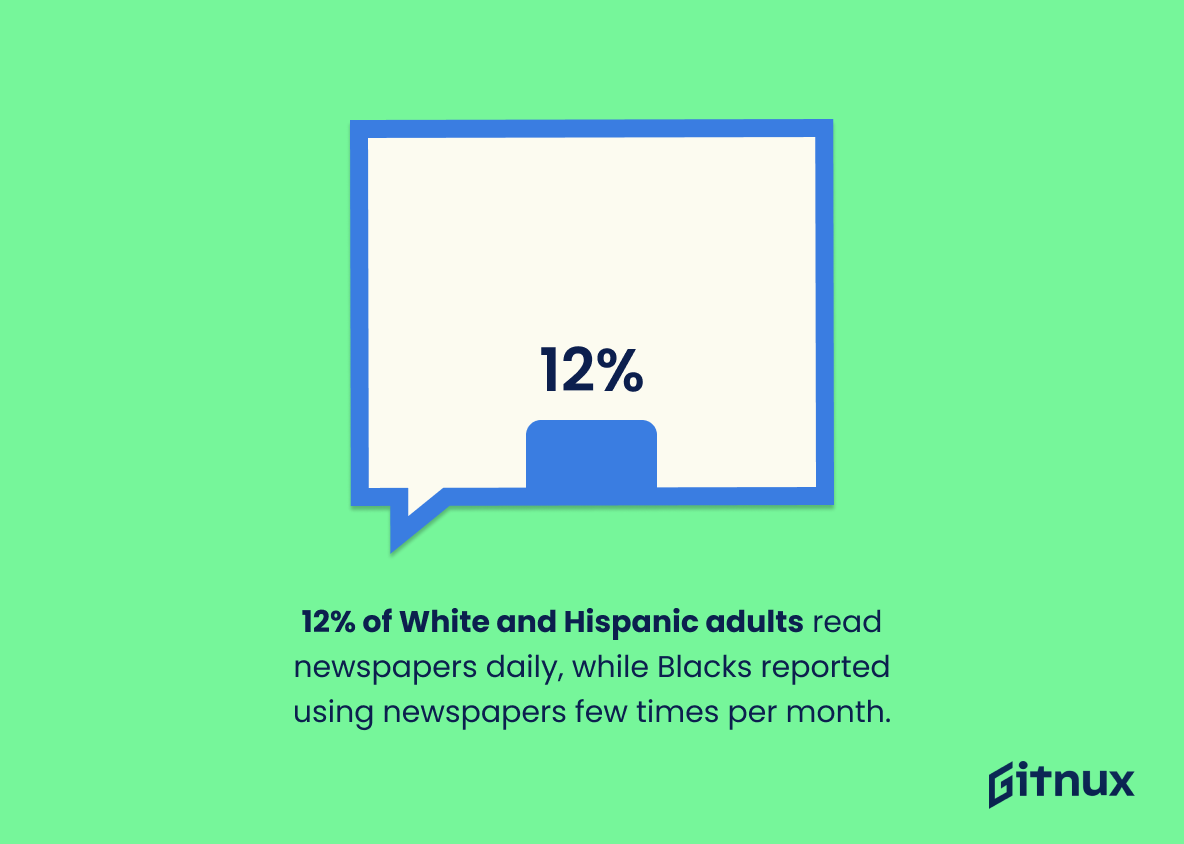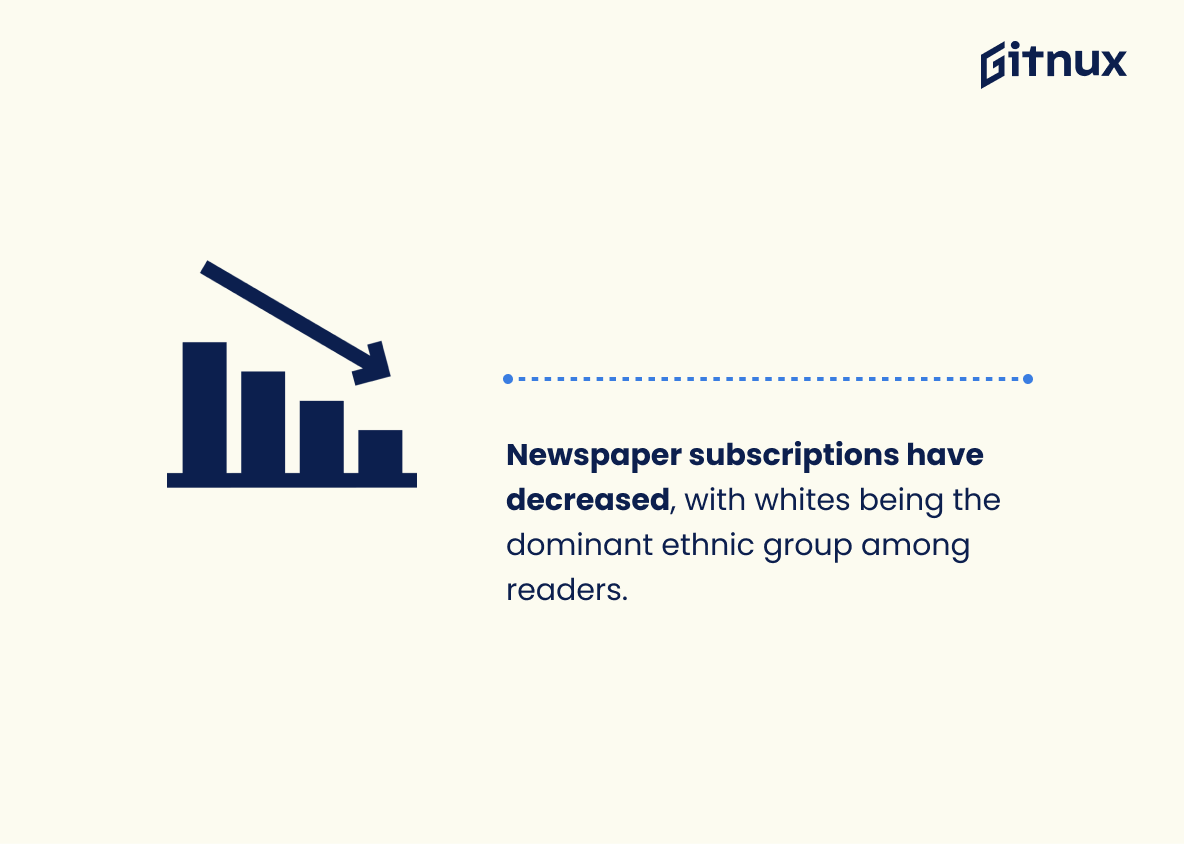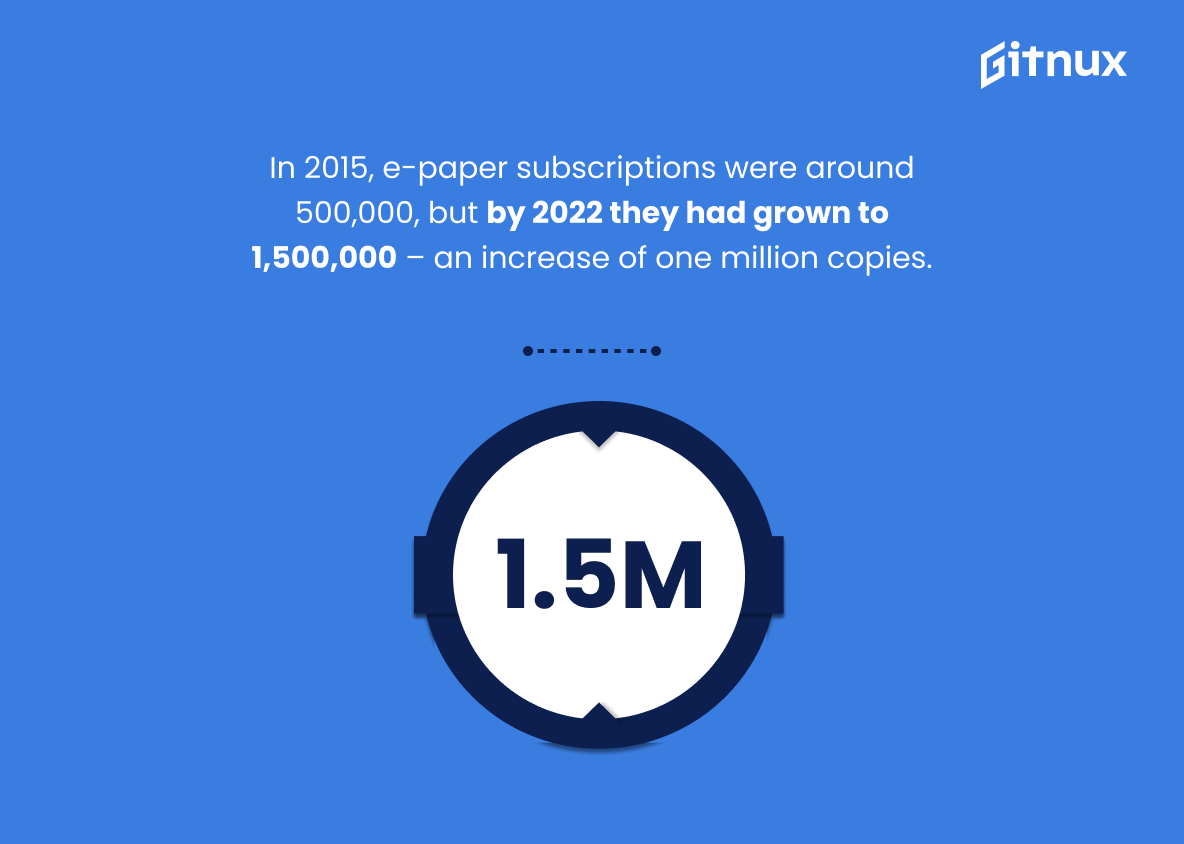The newspaper industry has been in a state of flux for the past decade. With the rise of digital media, the traditional print newspaper has been struggling to keep up. But despite the challenges, newspapers still remain a vital part of our culture and a source of news and information for many.
In this article, we’ll take a look at the latest statistics on newspaper subscribers and explore what they tell us about the industry’s future.
Newspaper Subscriber: Most Important Statistics
In Italy, 60% of daily newspaper readers are male and 40% are female.
Daily newspaper consumption has decreased significantly over time, dropping from 62.82 million in 1987 to 24.29 million in 2020.
Newspaper Subscriber: Statistics Overview
Older generations are more likely to have daily newspaper subscriptions than younger ones.
Older generations are more likely to subscribe to daily newspapers than younger generations, which could be indicative of a larger trend in the media industry.
This could have implications for the way newspapers and other media outlets target their audiences and the types of content they produce.
92% of Millennials, 83% of Boomers, and the highest rate of Retirees (no percentage given) are likely to continue their newspaper or magazine subscriptions as of February 2017.
Millennials and Retirees are more likely to continue their newspaper or magazine subscriptions than Boomers, which could be indicative of a generational shift in the way people consume news.
Women in Sweden are more likely to subscribe to daily newspapers than men.
Women are more likely to be engaged with the news and current events than men. This could be due to the fact that women are more likely to be interested in the news or that they have more access to news sources than men.
This could also be an indication of the gender gap in terms of access to news sources. This statistic is important because it provides insight into the gender dynamics of news consumption in Sweden.
In Italy, 60% of daily newspaper readers are male and 40% are female.
This shows the gender disparity in readership of daily newspapers in Italy. It is important to understand the gender breakdown of readership in order to better understand the preferences of readers and to create content that appeals to a wider audience.
China, Japan and the US have the highest newspaper circulation per day, meaning more people read newspapers in these countries.
This statistic matters in the context of Newspaper Subscribers Statistics because it shows which countries have the highest readership of newspapers, which can be used to inform marketing and advertising strategies for newspapers.
Digital-only news subscribers for The New York Times and Gannett have grown significantly in the last five years, yet 67% of news consumers still do not pay for news.
Although digital-only news subscriptions have grown, the majority of news consumers still prefer to access news for free. This could be a challenge for news companies as they rely on subscription revenue to stay afloat.
12% of White and Hispanic adults read newspapers daily, while Blacks reported using newspapers few times per month.
This reveals the differences in newspaper consumption between different ethnic groups. This information can help newspapers better understand their readership and tailor their content to better serve their readers.
The total number of newspaper subscribers has decreased over time, with whites still being the most popular ethnic group among readers.
The newspaper industry is struggling to maintain readership, regardless of the ethnicity of the readers.
This could be an indication that readers are turning to other forms of media for their news, such as online sources, and that newspapers need to find ways to attract new readers and retain existing ones.
Daily newspaper consumption has decreased significantly over time, dropping from 62.82 million in 1987 to 24.29 million in 2020.
This statistic is important because it shows the decline of newspaper subscribers over time. This could have a significant impact on the newspaper industry, as fewer people are consuming their content.
This could lead to a decrease in advertising revenue and a decrease in the number of journalists employed. This could have a ripple effect on the industry, as fewer people are consuming their content.
In 2015, e-paper subscriptions were around 500,000, but by 2022 they had grown to 1,500,000 – an increase of one million copies.
Digital newspapers are becoming increasingly popular, with subscription sales growing every year.
More people are choosing to subscribe to digital newspapers, which can help increase revenue and ensure the long-term success of the newspaper industry.
Conclusion
In conclusion, newspaper subscribers statistics show that there is still a large market for print newspapers, despite the rise of digital media. While digital media has had an impact on print newspaper subscriptions, the numbers still remain strong.
There is still a large audience that prefers to read their news in print, and the industry is still a viable option for those looking to stay informed.
References
1 – Share of daily newspaper subscribers in Sweden 2009-2021, by age group
2 – U.S. continuing newspaper subscription likelihood 2017 | Statista
3 – Sweden: newspaper subscribers by gender 2021 | Statista
4 – Daily newspapers readers Italy 2021-2022, by gender
5 – World Top Ten Countries With Highest Newspapers Circulation
6 – News subscriptions worldwide – statistics & facts | Statista
7 – Newspaper consumption frequency U.S. by ethnicity 2022 | Statista
8 – Newspapers: Daily Readership by Ethnic Group | Pew Research Center
9 – Paid circulation of daily weekday newspapers U.S. 2020 | Statista
10 – E-papers: paid circulation in Germany 2022 | Statista
